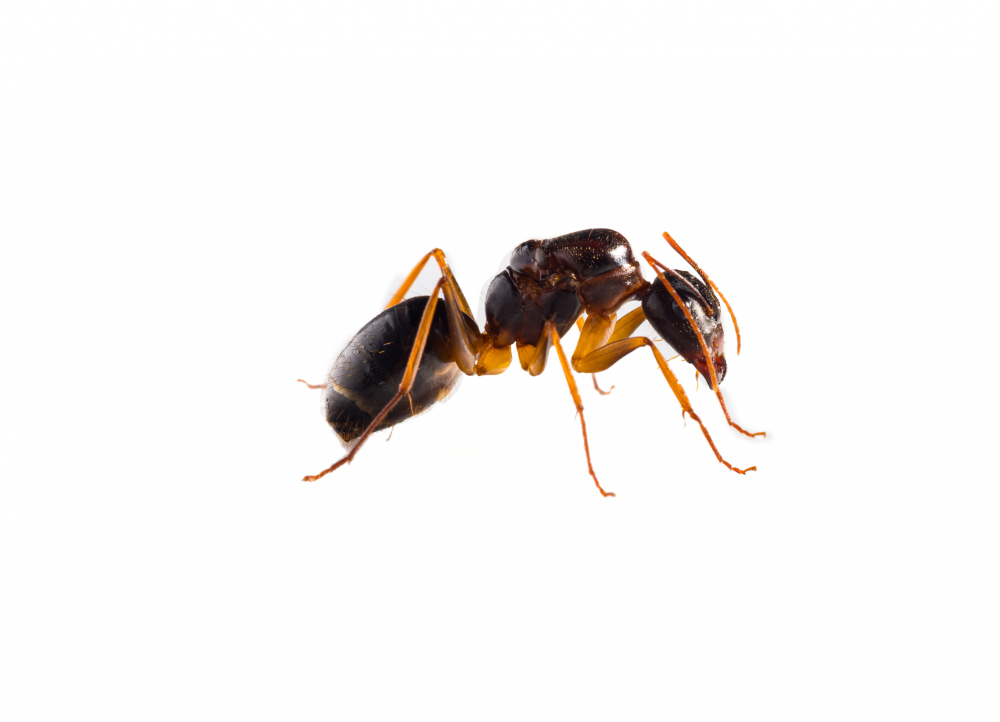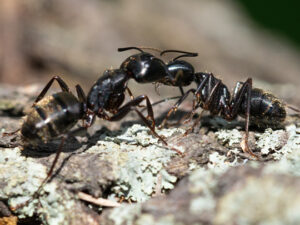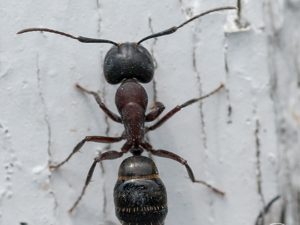
The curious and industrious nature of ants often leads them from their colonies to our homes, where they can quickly become uninvited guests. As a homeowner, it’s crucial to understand the different ant species you might encounter and how to effectively manage an infestation. Here at Town And Country Pest Solutions, we’re committed to not only providing you with professional support but also empowering you through knowledge. In this comprehensive guide, we’ll take a closer look at the most prevalent ant species that invade homes, and we’ll provide you with strategies to safeguard your domain.
The Top Ant Culprits You Might Meet
Argentine Ants
Argentine ants are small, ranging from light to dark brown in color. Indoors, they typically nest in moist areas and can be found near food sources. Outdoors, these prolific ants form large colonies, often displacing native ant species. Recognizable by the distinctive lines on their body, Argentine ants prefer sweets and can become a nuisance in kitchens.
Odorous House Ants
If you’ve noticed a distinctive, unpleasant smell when crushing ants, you might be dealing with odorous house ants. These ants, about 2.4 to 3.3 mm long, are brown to black and typically forage in trails along countertops or baseboards, searching for sweets and water. They often nest in wall voids and crevices.
Carpenter Ants
Largest of the household invaders, carpenter ants can range from 6 to 12 mm, and are typically reddish-black or all black. They don’t eat wood but tunnel through it to build their galleries. You might spot them around windows, sinks, and in the foundations. It’s imperative to address carpenter ant infestations quickly to prevent structural damage.
Pavement Ants
Pavement ants are less than 3 mm long and brown to black. You’ll find them around masonry, especially on humid days when they push through cracks looking for water and sweet foods. They can form sizeable colonies under sidewalks, in concrete foundations, and in walls.
How to Detect an Ant Infestation
Ant infestations can be subtle at first, with the occasional scout ant seeking food. To catch an infestation early, look out for the following signs:
- Trails of Ants: Ants often communicate using scent trails. If you see a consistent line of ants traveling in a particular direction, you may have an infestation.
- Visible Nests: Some ants construct visible nests, though many prefer hidden locations. Nests can include piles of dirt, wood shavings, or excavated materials.
- Noises: Carpenter ants can sometimes be heard rustling within walls and woodwork.
- Tiny Piles of Material: Certain species, like pavement ants, excavate sand and soil, leaving small piles of material.
Preventing and Managing Ant Infestations
Keep Your Home Clean and Dry
The best way to prevent ant infestations is to keep your home unattractive to these pests. Clean up spills immediately, store food in airtight containers, and take out the trash regularly. Additionally, address any water leaks as soon as you notice them to remove potential water sources.
Seal Entry Points
Ants can find their way into your home through the tiniest of openings. Seal cracks in the foundation, gaps around windows and doors, and any other potential entry points with silicone caulk.
Herbal Repellents
Some plants and herbs that are pleasant to us can be pungent for ants. Peppermint, cinnamon, and clove oils are known to deter ants. Mix a few drops of these essential oils with water and spray it in areas where ants might enter or forage.
Vinegar Solution
A simple mixture of equal parts vinegar and water can help clean surfaces and deter ants due to its strong scent. Spray this solution around entry points and areas where you’ve seen ant activity.
Professional Assistance
If you’re dealing with a persistent or particularly troublesome ant infestation, don’t hesitate to seek professional pest control assistance. At Town And Country Pest Solutions, our team of skilled technicians can identify the ants in your home and customize a plan to eliminate them.
Maintaining a Pest-Free Home
Regular Inspections
Make it a habit to inspect your home, both inside and out, every few months for signs of pests. Early detection can make treatment easier and less costly.
Routine Maintenance
Keep up with home maintenance such as sealing cracks and crevices, clearing debris from your yard, and trimming vegetation away from your home to reduce the likelihood of pests finding a way inside.
Pest-Exclusion Techniques
Consider implementing exclusion techniques like installing door sweeps, repairing window screens, and keeping outdoor trash cans away from the house to minimize pathways for pests.
Environmental Controls
In some cases, adjusting environmental factors such as temperature and humidity can be effective in deterring pests.
By familiarizing yourself with the ant species that are common culprits for home invasions, you arm yourself with the knowledge to identify and manage infestations effectively. Remember, maintaining a pest-free home is an ongoing process that requires vigilance and a multifaceted approach. We hope this guide equips you to protect your home from ant infestations. If you need further assistance or wish to learn more about our pest control services, visit Town And Country Pest Solutions to schedule a consultation.











